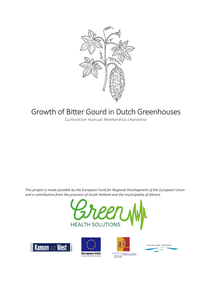Since concepts may have different meanings in different contexts, students have to learn to recontextualise them, i.e. to adapt their meanings to a new context. It is unclear, however, what characteristics a learning and teaching strategy for recontextualising should have. The study aims to develop such a learning and teaching strategy for cellular respiration. The strategy consists of a storyline, consisting of three contexts, with embedded cognitive elements and some episodes focussed on recontextualising cellular respiration. Testing the strategy in two classes in upper secondary biology education showed that the strategy was largely practicable.
LINK
This research paper looks at a selection of science-fiction films and its connection with the progression of the use of television, telephone and print media. It also analyzes statistical data obtained from a questionnaire conducted by the research group regarding the use of communication media.
DOCUMENT
![Does Science-Fiction predict [or change] the future?](https://publinova-harvester-content-prod.s3.amazonaws.com/thumbnails/files/previews/pdf/20250506145555255024.adbf7edd-9619-4d0e-9a17-e0e7096adc7f-thumbnail-400x300.png)
The thoracic and peritoneal cavities are lined by serous membranes and are home of the serosal immune system. This immune system fuses innate and adaptive immunity, to maintain local homeostasis and repair local tissue damage, and to cooperate closely with the mucosal immune system. Innate lymphoid cells (ILCs) are found abundantly in the thoracic and peritoneal cavities, and they are crucial in first defense against pathogenic viruses and bacteria. Nanomaterials (NMs) can enter the cavities intentionally for medical purposes, or unintentionally following environmental exposure; subsequent serosal inflammation and cancer (mesothelioma) has gained significant interest. However, reports on adverse effects of NMon ILCs and other components of the serosal immune systemare scarce or even lacking. As ILCs are crucial in the first defense against pathogenic viruses and bacteria, it is possible that serosal exposure to NMmay lead to a reduced resistance against pathogens. Additionally, affected serosal lymphoid tissues and cells may disturb adipose tissue homeostasis. This review aims to provide insight into key effects of NMon the serosal immune system.
DOCUMENT

Om inzicht te krijgen in spierveroudering is genexpressie gemeten in vastus lateralis biopten van jonge en oude mannen en vrouwen. We vonden dat tijdens het ouder worden bij beide geslachten dezelfde categorieën genen in spieren worden aan- en uitgeschakeld (“gereguleerd”); de mate van deze zogenaamde differentiële expressie was echter geslachtsspecifiek. Bij mannen was oxidatieve fosforylering het meest in het oog springende proces, en bij vrouwen was dit celgroei gemedieerd door AKT-signalering. De conclusie is dat dezelfde processen zijn geassocieerd met skeletspierveroudering bij mannen en vrouwen, maar dat de differentiële expressie van die processen geslachtsspecifiek is.
MULTIFILE

Bitter gourd is also called sopropo, balsam-pear, karela or bitter melon and is a member of the cucumber family (Cucurbitaceae). It is a monoecious, annual, fast-growing and herbaceous creeping plant. The wrinkled fruit of the bitter gourd is consumed as a vegetable and medicine in Asia, East Africa, South America and India. The aim of this bitter gourd cultivation manual is to make this cultivation accessible to Dutch growers and in this way be able to meet market demand. In addition, this cultivation manual aims to provide insight into the standardized production of the medicinal ingredients in the fruit.
DOCUMENT

Discussions about the importance of the built environment for healthcare delivery extend at least as far back as Hippocrates 1 (400 BC). The iconic Florence Nightingale (1859) also strongly believed in the influence the indoor environment has on the progress of disease and recovery. Today, the role of the built environment in the healing process is of growing interest to healthcare providers, environmental psychologists, consultants, and architects. Although there is a mounting evidence 1 linking healthcare environments to health outcomes, because of the varying quality of that evidence, there has also been a lack of clarity around what can and cannot be achieved through design. Given the ageing of society and the ever increasing numbers of persons with dementia in the Western World, the need for detailed knowledge about aged care environments has also become increasingly important. The mental and physical health state of these persons is extremely fragile and their needs demand careful consideration. Although environmental interventions constitute only a fraction of what is needed for people with dementia to remain as independent as possible, there is now sufficient evidence (2, 3) to argue they can be used as a first-line treatment, rather than beginning with farmalogical interventions.
DOCUMENT
